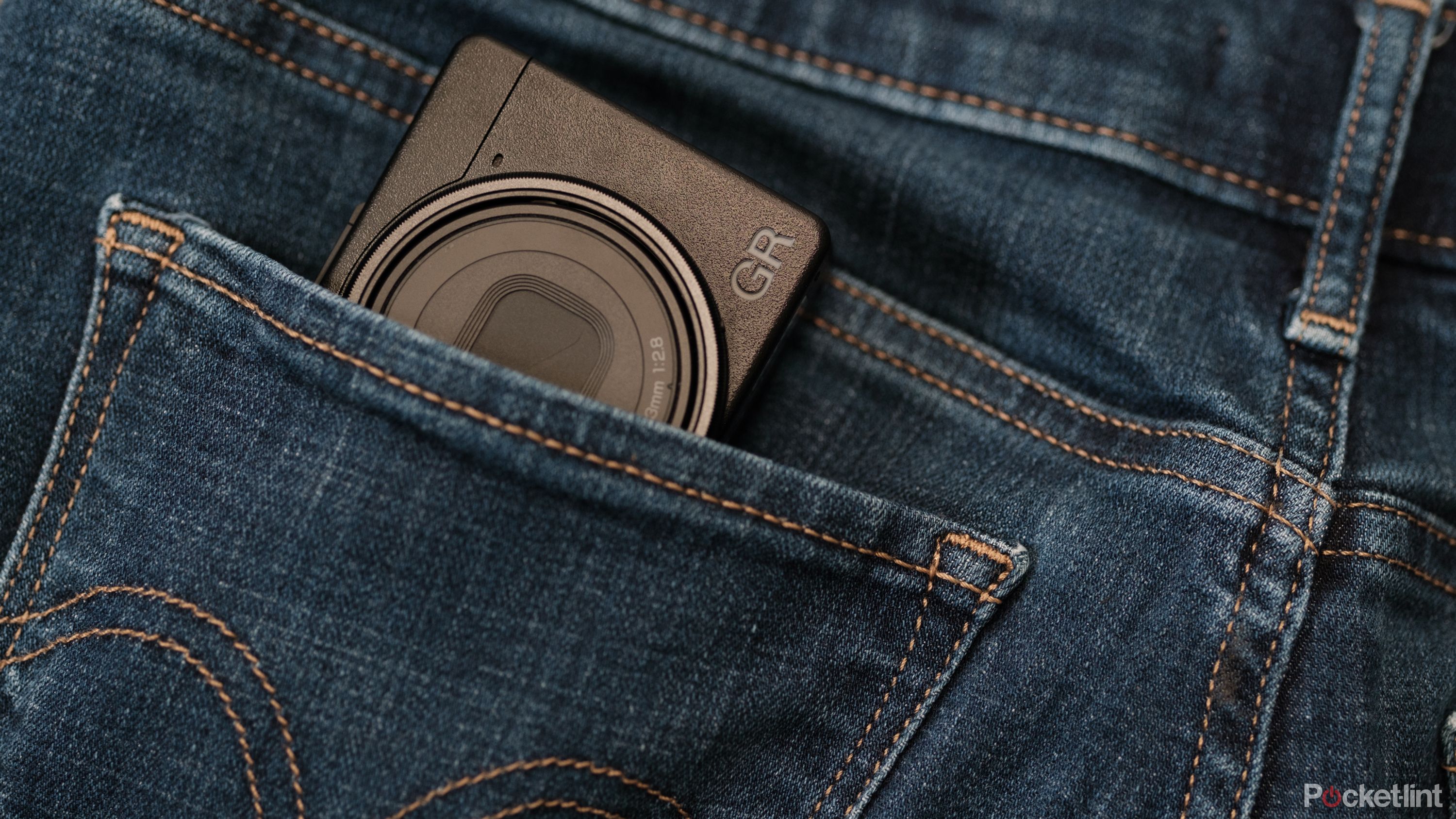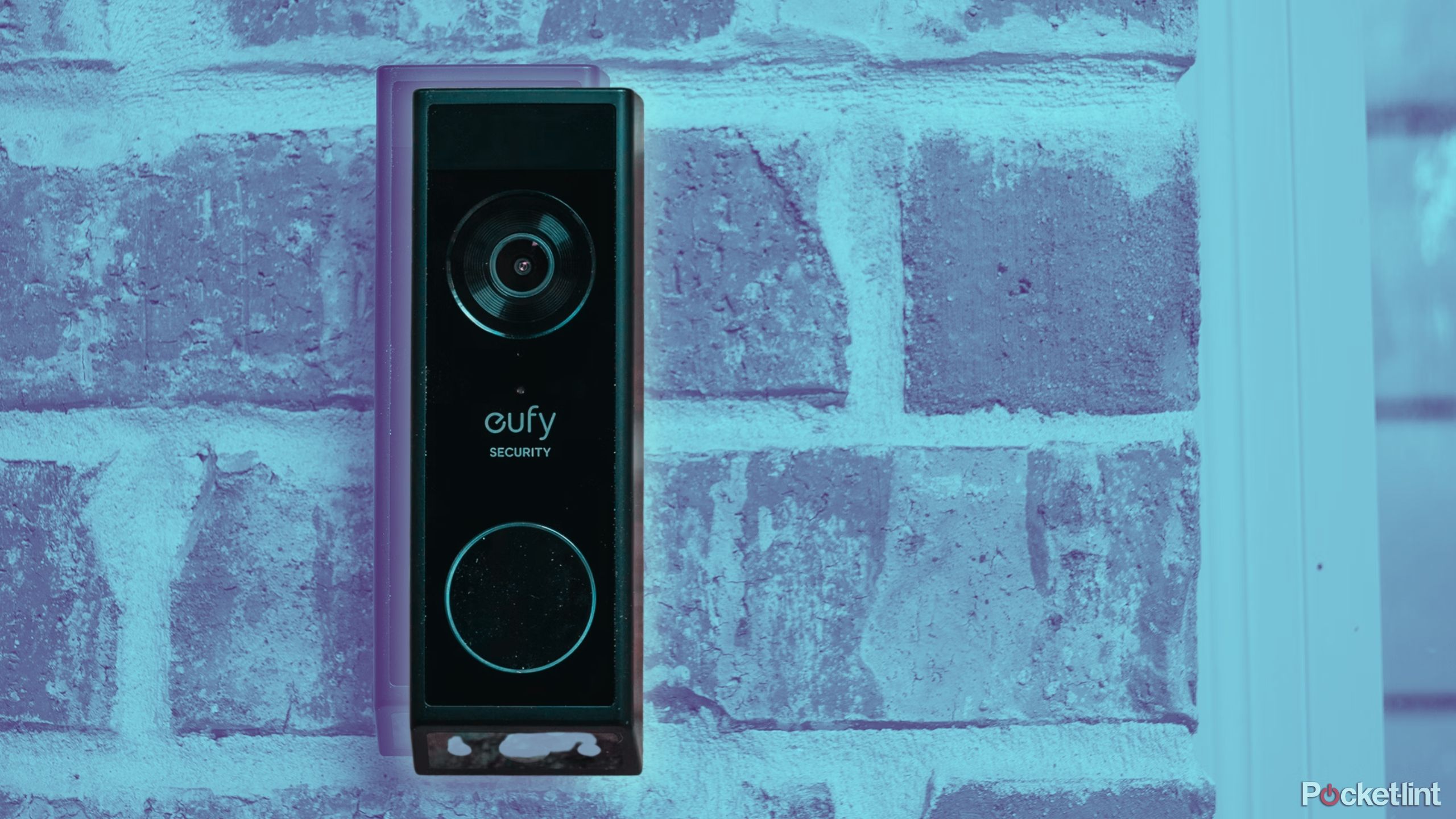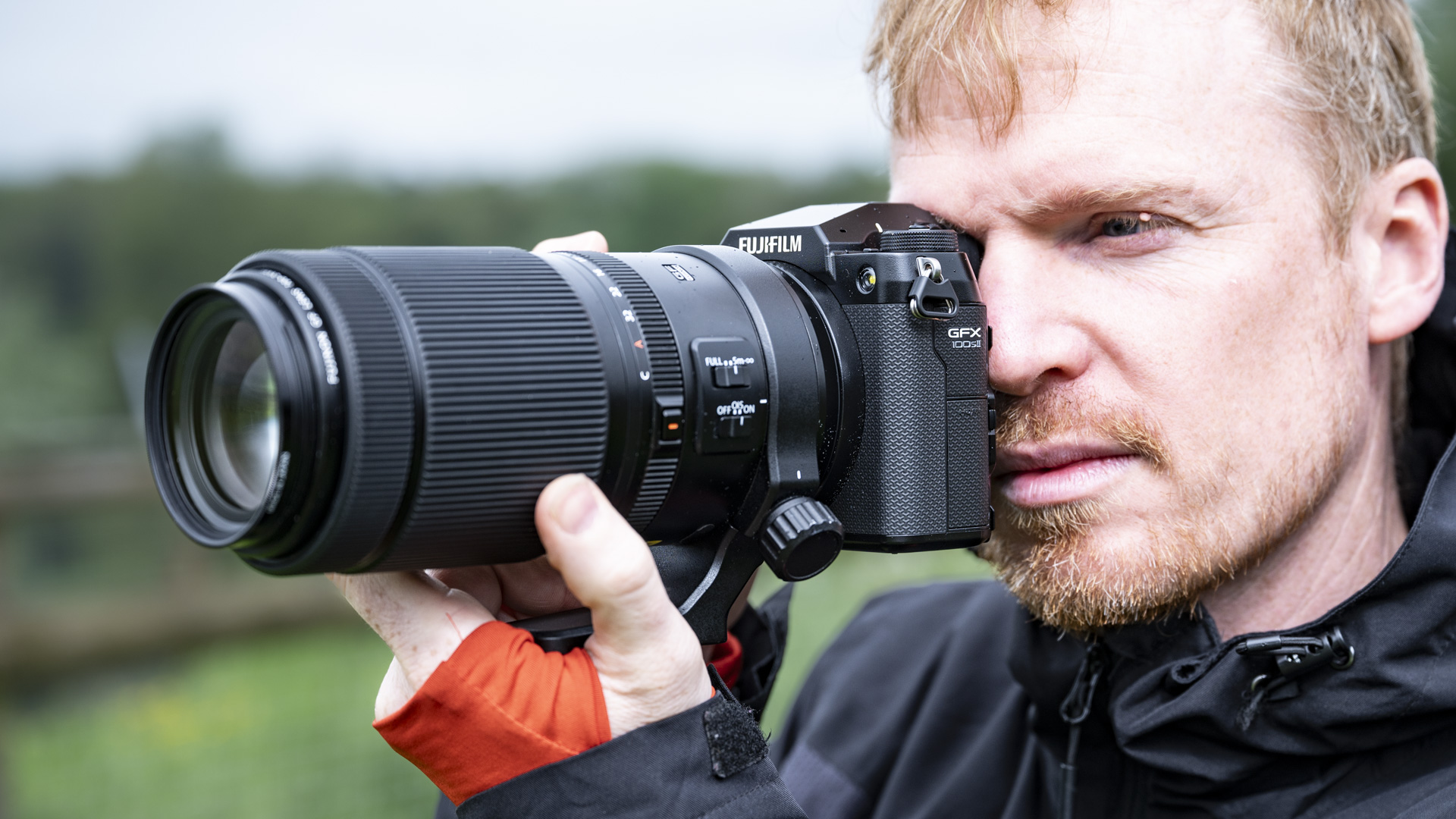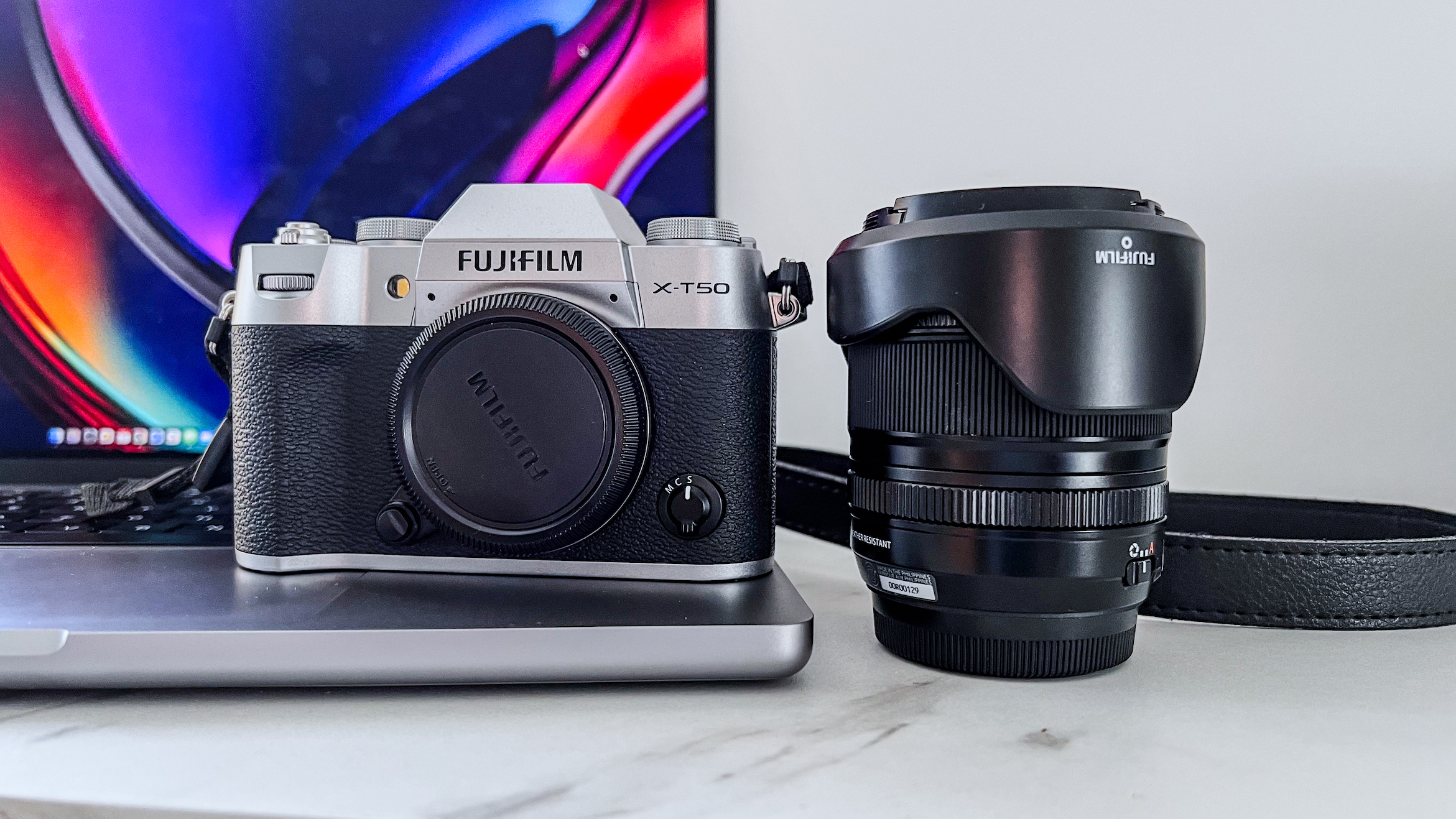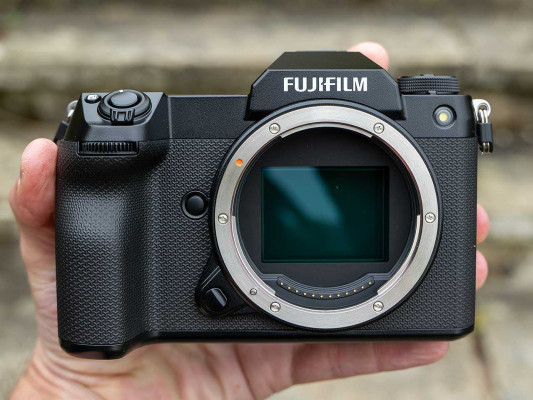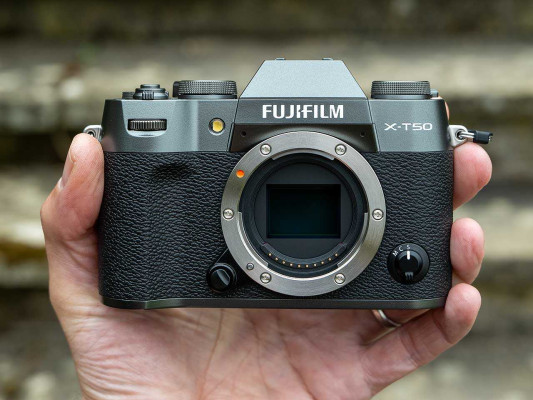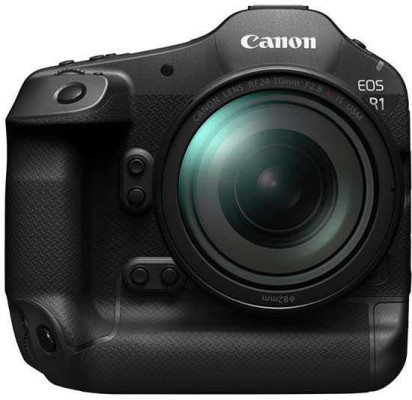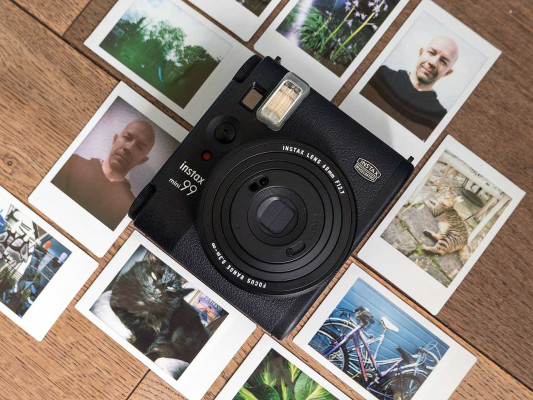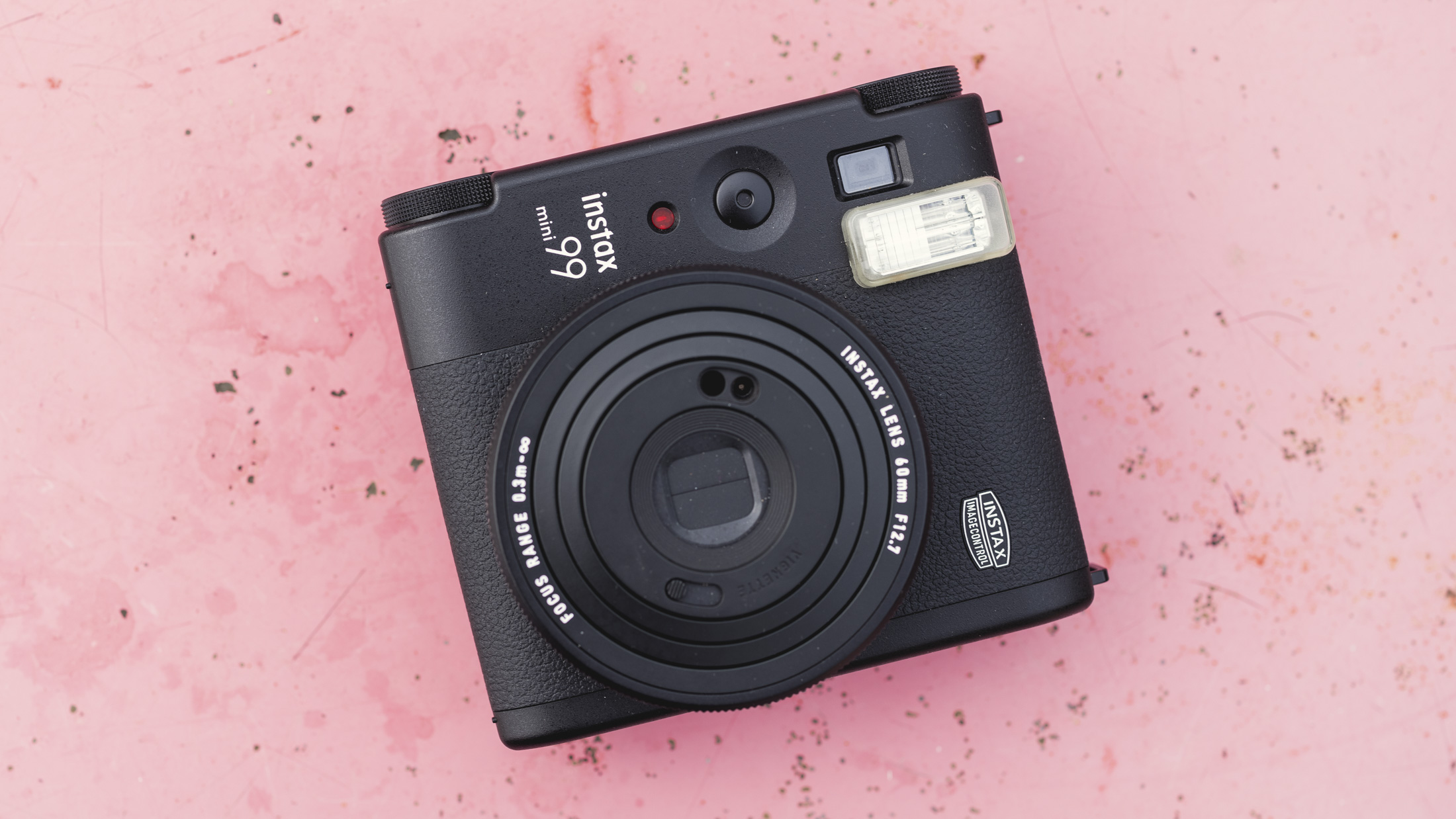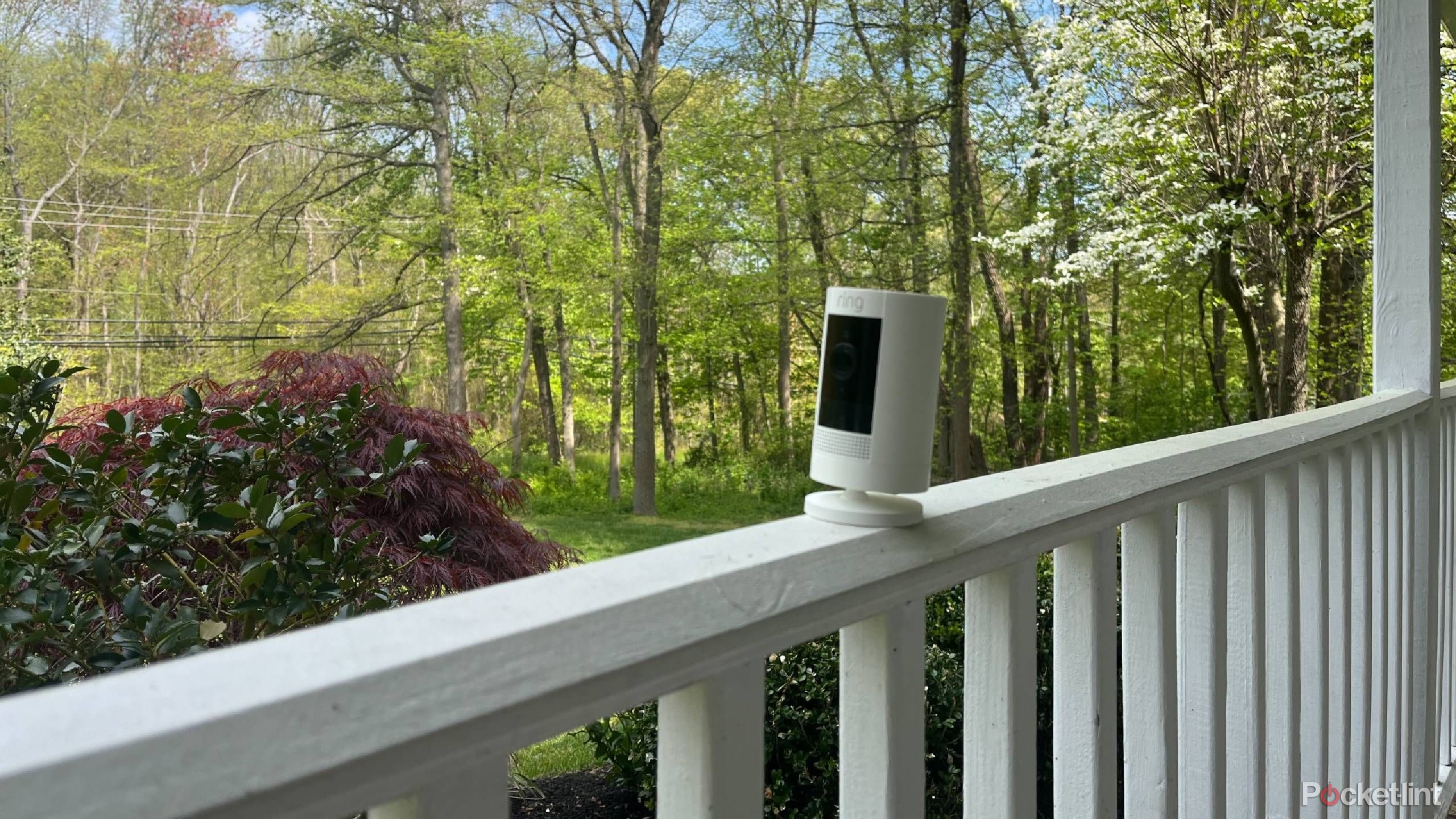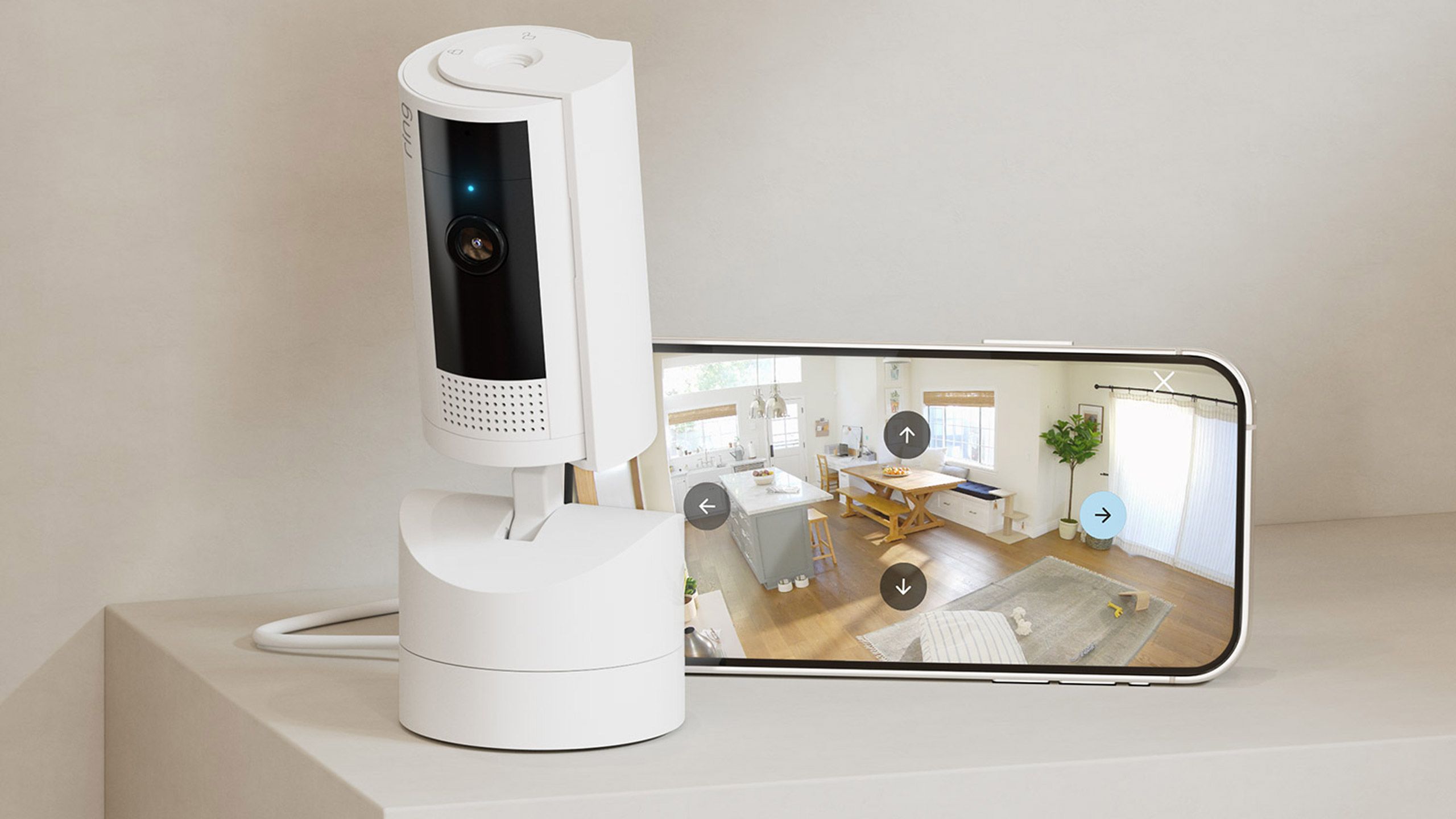Reviews

Sony a9 III review
DPReview Latest |
Product photos: Richard Butler
The Sony a9 III is the company's latest high-speed pro sports camera. It features a Stacked CMOS sensor capable of shooting at 120 fps and able to capture all its pixels' data simultaneously: the long hoped-for 'global' shutter.
Key features
- 24MP global shutter Stacked CMOS sensor
- High speed shooting up to 120 fps
- Pre-burst capture of up to 1 sec before the shutter is fully pressed
- Shutter speeds up to 1/80,000 with flash sync across the full range
- 9.44M dot (2048 x 1536px) OLED viewfinder with 0.9x magnification
- 2.0M dot rear LCD with tilting cradle on a fully articulated hinge
The a9 III is available now at a recommended price of $6000. This is a $1500 increase over the previous iteration from 2019. A matching VG-C5 battery grip that provides space for two batteries is available for an additional $398.
Index:
- What's new
- How it compares
- Body & handling
- Image quality
- Autofocus and action photography
- Video
- Conclusion
- Sample galleries
- Specifications
|
What's new
Global shutter sensor
The big news with the a9 III is the move to a sensor that offers a global electronic shutter: ending the exposure for all its pixels simultaneously so that there's no lag or rolling shutter effect. Such sensors have existed before (some CCD chips, for instance), but this is the first one to use a full-frame sensor in a modern mirrorless camera to deliver the full potential benefits.
The sensor delivers the camera's two main selling points: the global shutter, which extends what the camera can offer in three specific areas, and sheer speed. As well as having no motion distortion from its capture, the a9 III is able to shoot at up to 120 frames per second.
 |
Its fast readout also allows incredibly high speed capture, with shutter speeds that extend to 1/80,000 sec. The global readout also means it can sync with flashes all the way up to its maximum shutter speed (though the power of the flash will be reduced at the very shortest exposures and may require the timing of the flash trigger signal to be fine-tuned so that the exposure syncs with the brightest point of the flash output).
There are downsides to the sensor, though: the global shutter design works by using what is effectively a second photodiode within each pixel to act as a buffer: holding the charge generated by the exposure so it can all be read out later. This reduces the effective size of the photodiode used to capture the image, reducing the amount of charge each pixel can hold before it becomes full.
This reduced capacity for charge means the pixel becomes saturated sooner, so it can tolerate less light before clipping. In turn, this means it needs to be given less exposure, which is reflected in the base ISO of 250, 1.3EV higher than typical. Giving a sensor less light instantly reduces the image quality, because light itself is noisy, and this noise is more visible, the less light you capture.
120fps shooting
 |
| The new C5 button on the front of the camera is set, by default, to activate the speed boost function for temporary access to 120 fps shooting. |
The super-fast sensor readout allows the a9 III to deliver a faster shooting rate than we've ever seen from a sensor this large. Whereas the previous generation of Stacked CMOS sensors with progressive readout would shoot at up to 30 frames per second, the a9 III quadruples this to 120. Sony has published a list of its lenses that can operate at this full speed.
It's a reasonable question to consider how often even the most demanding sports photographers will need to shoot at 120 frames per second, and how much more sorting and selecting work will be created by generating so many additional files.
You can lower the burst rate to whatever makes the most sense for your specific subject, but there's also an option to temporarily jump back to a faster rate when you hold a button down, meaning you could shoot at, say, 30 fps in the buildup to what you expect to be the critical moment, then press a custom button to give a faster, more concentrated burst around the moment of interest itself.
Interestingly, the a9 III continues to use Sony's preferred CFexpress Type A cards, which have half the read/write channels of the larger Type B format. This means the a9 III has to depend that bit more heavily on its internal buffer. It has the capacity to shoot 196 uncompressed 14-bit Raw files in a burst, allowing 1.6 seconds of capture at its fastest rate. This is nearly 10GB of data, which gives some idea of the size of the camera's buffer but also of how quickly you'd fill up your cards if you shot at full tilt in Raw.
Pre-capture
The a9 III becomes the first Sony to have a pre-capture feature: starting to buffer images when you half-press the shutter button or hold the AF-On button, then retaining up to one second's worth of images when you fully press the shutter. You can reduce the time period to as little as 1/200 sec if you're really confident in your ability to anticipate the crucial moment, but the pre-buffer time isn't affected by your choice of shooting rate.
Dedicated 'AI' processor
The a9 III gains the 'AI' processor that Sony first introduced in the a7R V. This does not add any 'intelligence' or learning in and of itself, but is designed to process the complex subject algorithms created by machine learning for functions such as subject recognition. This should boost the camera's subject recognition performance compared to previous generations of cameras, such as the a1, making the tracking more responsive and more robust.
8EV image stabilization
 |
| The a9 III gets the flexible tilt-and-hinge cradle we previously saw on the a7R V. It can be manipulated into all sorts of positions, for wherever you're shooting from. |
The a9 III also gains the latest image stabilization processing algorithms, helping it deliver performance that's rated at up to 8.0EV of correction, using the CIPA standard methodology. This is an appreciable increase over the 5.5EV offered by previous generations of cameras. Unlike Canon's system, this doesn't depend on synchronized use of in-body and in-lens IS mechanisms, so users should see an increase in correction performance over a wide range of lenses, though the peak correction may not be so well maintained quite so well at extremely long and short focal lengths.
C2PA authentication
Although not present at launch, Sony says it plans to add C2PA authentication to the a9 III. This is a cryptographic metadata standard developed by a range of software makers, camera makers and large media organizations that will provide a secure record of the file's provenance and edit history, allowing media organizations to know that the images they are receiving can be traced back to a specific camera and haven't been inappropriately manipulated.
How it compares
With its high shooting speed and pro-friendly features, the a9 III's closest competitors are the pro sports bodies from Canon and Nikon, as well as Sony's own a1. This is an exclusive group, not only in the sense of commanding a significant price but also in that they have professional support networks established to ensure working pros have the most possible 'up' time. While other cameras promise fast shooting and capable autofocus, these are the models that the most demanding professionals rely on.
| Sony a9 III | Sony a1 | Canon EOS R3 | Nikon Z9 | |
|---|---|---|---|---|
| MSRP | $6000 | $6500 | $6000 | $5500 |
| Pixel count | 24MP | 50MP | 24MP | 46MP |
| Sensor type | Stacked CMOS (Global shutter) |
Stacked CMOS | Stacked CMOS | Stacked CMOS |
| Max burst rate | 120fps | 30fps | 30 fps 196 fps** (AE/AF fixed) |
30fps (JPEG) 20fps (Raw) 120fps (11MP JPEG) |
| Pre-capture? | Up to 1 sec | – | – | JPEG only |
| IS rating (CIPA) | Up to 8.0 EV | Up to 5.5EV | Up to 8.0 EV | Up to 6.0EV |
| Base ISO | 250 | 100 | 100 | 64 |
| Max ISO | 51200 | 102400 | 204800 | 102400 |
| Max shutter speed | 1/80,000 | 1/32,000 1/8000 mech |
1/64,000*** 1/8000 mech |
1/32,000 |
| Flash sync | 1/80,000 | 1/400 | 1/250 EFCS 1/200 Mech 1/180 Elec |
1/250 |
| Viewfinder res / size / eyepoint |
9.44M dots 0.9x 25mm |
9.44M dots 0.9x 25mm |
5.76M dots 0.76x 23mm |
3.69M dots 0.8x 23mm |
| Refresh rate | Std: 120 fps High: 240 fps |
Std: 60 fps High: 120 fps H+: 240 fps* |
Power save: 60 fps Smooth: 120 fps |
Std: 60 fps High: 120 fps |
| Rear screen | 2.0M dots fully articulated on tilt cradle | 1.44M dots tilting | 4.15M dots fully articulating | 2.1M dots, two-way tilt |
| Max video res | 4K up to 120p MOV | 8K/30 UHD MOV | 6K/60 DCI Raw 4K/120 DCI/UHD MOV |
8K/60 Raw 8K/30 DCI MOV |
| Media | 2x CFexpress Type A / UHS II SD | 2x CFexpress Type A / UHS II SD | 1 CFe Type B 1 UHS II SDq |
2x CFe Type B / XQD |
| USB | 10Gbps | 10Gbps | 10Gbps | 5Gbps |
| CIPA Battery life (LCD / EVF) | 530 / 400 | 530 / 430 | 760 / 440 | 740 / 700 |
| Weight | 702g | 737g | 822g | 1340g |
| Dimensions | 136 x 97 x 83 mm | 129 x 97 x 81 mm | 150 x 143 x 87 mm | 149 x 150 x 91 mm |
*Viewfinder res and display size are reduced
**AF and AE locked, in bursts of up to 50 images.
***Whole stop increments only between 1/16,000 and 1/64,000
The a9 III stands out, even from the other manufacturer's pro-grade cameras, in offering 120 fps shooting as a standard mode, with full AF and Raw capture, whereas Canon's R3 locks AF and AE at the first exposure (rarely ideal for the kinds of action shooting that require high speed bursts) and the Nikon outputs significantly reduced resolution JPEGs.
Like the EOS R3, the a9 III opts for speed over resolution, meaning it can't deliver the 8K footage that the a1 and Z9 can. Also, any users hoping for Raw video will need to buy an external recorder, rather than being able to capture this in-camera, as you can on the Canon and Nikon.
The biggest apparent shortcoming is the relatively low battery life of the a9 III, as it's a single grip camera and hence lacks the space for the larger batteries included in the Canon and Nikon. Adding the BG-C5 battery grip adds space for a second battery, as well as providing duplicate portrait orientation controls.
Body and handling
 |
Although the company's a7, a9 and a1 models all look similar, each generation has seen the control layout reworked and details such as the handgrip tweaked. The a9 III sees a larger than typical re-working of Sony's ergonomics.
The grip is a little deeper, with a more prominent dent for the middle finger to rest in, but more significantly, the shutter button is placed on a surface that angles forward rather than sitting in the same plane as the camera's top plate. This means you don't have to rotate your hand or stretch your finger quite so far to reach the shutter. In turn, the custom buttons on the camera's top plate have been extended upwards so that they're still accessible from this less stretched position.
 |
It's a relatively small adjustment but enough that you'll notice it after several hours of shooting. Given the a9 III's target audience, it's hard not to make assumptions that this change has been made in response to Sony's tie-up with the Associated Press, giving the company more feedback from a large pool of working pros.
Beyond this, the body is pretty familiar from the previous generation of cameras, with most of the control points and custom buttons existing in the same places. The main exception to this is that the a9 III gains a fifth custom button, on its front panel. By default, this is used for the 'speed boost' function, but this can be modified.
 |
The a9 III has the same 9.44M dot (2048 x 1536px) OLED viewfinder that first appeared in the Sony a1. The optics in front of the panel give an impressive 0.9x magnification, meaning it's very large to look at, and the fast sensor means its full resolution is used even when refreshing at 120fps. There's a 240fps mode if you need an even more frequent update of what's going on in the scene, but this runs at a reduced resolution. The viewfinder shows no blackout at all when shooting images.
The rear screen is a 2M dot panel that's arranged on a tilting cradle that is itself hinged at the side, providing a wide range of movement and adjustment.
 |
The a9 III uses the same NP-FZ100 battery as all the most recent full-frame cameras have. It's a well-sized 16.4Wh unit that powers the camera to a rating of 530 shots per charge, using the rear LCD according to CIPA standard tests. This drops to 400 shots per charge if you use the viewfinder. These are strong numbers compared to most cameras but some way behind those of its pro sports peers, which typically have a twin-grip body with space for a much larger battery.
Battery life can be increased significantly through the addition of the optional VG-C5 vertical grip. This adds the space for a second FZ100 and more than doubles the battery life, as Sony has developed a system for treating the two batteries as a single large power source.
It's also worth noting that the CIPA standard tests are even less reflective of the behavior of pro sports cameras than they are elsewhere. Bursts of images use much less power than the individual shot shoot-and-review process that standard testing assumes. As such, a rating of 400 shots per charge for a camera that shoots at 120 frames per second should not be taken to mean that the battery will only last for 3.3 seconds of holding the shutter down. This is nowhere close to being true.
Image quality
Our test scene is designed to simulate a variety of textures, colors and detail types you'll encounter in the real world. It also has two illumination modes to see the effect of different lighting conditions.
We've looked at the a9 III's image quality and have found that its performance is up to a stop behind those of contemporary full-frame cameras. Essentially the halving of the photodiode size halves the amount of light the sensor can tolerate. This raises the base ISO, limiting the maximum image quality the camera can deliver (ie: comparing base ISO to base ISO).
The added complexity of the sensor's design also means that it isn't able to offer a second low-noise readout path as has become common in dual conversion gain sensors that dominate the market. This sees up to a stop noise penalty, relative to its full-frame peers.
All of that said, a lot of sports shooting doesn't necessarily happen at ISO 100, so being limited to ISO 250 or higher needn't be a major issue (the a9 III isn't at any disadvantage, compared to its peers when shooting at moderate ISOs). Likewise, even something approaching a one-stop increase in noise at high ISO isn't likely to be a deal-breaking difference, especially if the a9 III's global shutter and incredibly rapid burst rates mean that it can get a shot that its rivals simply miss.
So, while the a9 III's sensor tech may not make as much sense in other cameras, for the high-speed users it's designed for, these aren't necessarily a significant drawback.
Exposure Latitude | ISO Invariance
Autofocus and action photography
By Carey Rose
Being Sony's most sports-focused flagship, it should come as no surprise that the a9 Mark III comes with outstanding autofocus performance across almost any situation you might think to put it in. Of course, no camera can fully substitute for a photographer's given experience and skill, but the a9 III gives you a high chance of success for your action-photography endeavors. It certainly netted this photographer plenty of keepers, under varieties of bright, dim, natural and artificial light.
If you've used any of Sony's recent camera bodies, the a9 III's autofocus interface will be familiar. You get a standard array of autofocus areas, as well as 'Tracking' equivalents of most of them. While you can certainly choose a static AF area and manually follow your subjects yourself with a very high hit-rate, much of the technology in the a9 III is designed to support its own tracking and subject recognition algorithms, so that's principally what we put to the test.
Autofocus setup
For general reportage and lifestyle shooting, I tended to keep the a9 III in one of its 'Flexible Spot: Tracking' modes, which works impressively well. In essence, you can choose your starting AF area size (small, medium or large), and then place that area over your intended subject and initiate tracking with the shutter or AF-On button.
This tracking sticks to your subject tenaciously even if it's not necessarily identifying it as a subject such as a bird or a plane. The a9 III will follow anything around the frame, like a flower, or a portion of someone's clothing, allowing you to experiment with composition while the camera keeps your chosen subject in focus. If you happen to initiate tracking over a person's face, the camera will automatically track their eyes if you have face and eye priority enabled. Use this technique for casual shooting and you'll basically never get an image out of focus (a hallmark of Sony cameras for a couple of generations now).
I found, however, that this wasn't my preferred method of photographing sports and action.
When I tried to work this way with team sports, the camera would often latch onto a player's arm, or portion of their uniform, or really whatever bit of them I could catch in the viewfinder and initiate focus on. And often, their face would be just noticeably outside the plane of focus.
So off I went to the camera's 'Custom' tracking AF areas, and dialed-in a tall, narrow rectangle that I could then move around the frame as I saw fit. I also programmed the camera to alter my AF area when I switched to portrait shooting orientation, so the rectangle would remain vertically oriented regardless of how I was holding the camera. In essence, I made my AF area the rough size and area of a human player or torso in the frame. Finally, I also instructed the camera to prioritize the tracking of human faces and eyes, if it could find them.
What this gave me was the ability to quickly identify which player I wanted the camera to track, after which the camera would reliably and quickly identify the player's eyes or face, and I could focus on following the action.
Another setting I ended up experimenting with that netted me further keepers was slowing the camera's default response to other subjects passing between me and the player I was following. I found it would too quickly jump off to other subjects in its default setting, for the sports I was shooting. I reduced this sensitivity, referred to in the camera as "AF Lvl for Crossing", by one notch and found that to be a sweet spot.
But as stated at the outset, sophisticated tracking algorithms aren't a panacea. The camera did an impressive job in spite of my less-than-perfect technique, but there were situations where I would be acquiring focus as two players overlapped, and the camera might track the unintended player.
Or I'd smash the shutter, attempting to drive focus to the correct point as well as start firing off a burst of shots, just as I spotted a crucial moment happening. The camera would often, amazingly, find correct focus, but I would occasionally get short bursts of out-of-focus images in these rushed scenarios. The blame for this result in these types of edge cases can hardly be laid at the camera's feet, though. You simply need to be realistic with your expectations and consider your own technique and reaction time accordingly. Even with a pricey sports flagship.
Other action photography considerations
Another of the headline features on the a9 III is its 120fps burst shooting mode. While I was reticent to use this swiftest shooting speed that often due to the sheer amount of data it produces, I appreciated the option for a custom button to enable this burst speed only when held.
It works very well in practice and is eminently useful when set up this way; I've found that 10-20fps is my sweet spot for most sports, but for certain moments, I boosted the camera to 120fps and enjoyed having the extra options to choose from.
 |
| ISO 8000 | 1/500 sec | F2.8 | Sony 70-200mm F2.8 GM II | Processed / cropped from Raw Photo by Carey Rose |
Take the above image, for example. The 120fps burst option allowed me to have a large degree of control in the final image over where the ball is in the air in relation to the player. It's a level of nit-pickiness that I can understand and respect, but I also think 20-30fps is realistically the maximum most people need most of the time.
In terms of displays, I appreciate the array of options relating to viewfinder speed and size, but I have to admit that I tended to keep the viewfinder out of its fastest setting, even for the most demanding sports. The resolution just drops too dramatically, to the point where it was difficult to tell if focus on a distant player was even accurate.
I also found that battery life was on the short side of my expectations, and while I never ran out, I found myself feeling motivated to turn the camera off and on again more often than I'd like during a given event. That said, I fully expect (and would recommend) that anyone looking at the a9 III should be budgeting for the battery grip. Not only do you get double the battery life, but I find it a necessity for shooting vertical, telephoto images handheld.
Autofocus summary
The a9 III is unquestionably a capable, high-performance autofocusing machine. Its subject tracking is seriously impressive, locking onto my intended subjects immediately and tracking them steadfastly. Put simply, if you find that you can't get the shot with the a9 III, I wouldn't necessarily look to blaming the camera first.
As capable as the camera is, it's also highly customizable, and you will absolutely benefit from some experimentation and dialing in preferred settings for the way you work and the subjects you shoot. This isn't a knock against the camera, just a fact of life for all sports camera flagships to varying degrees. And though I do expect AI-trained automatic modes will continue to improve, there must always be some method of your intentions about subject matter reaching the camera's processor, and so some customization will likely remain necessary for the foreseeable future.
As it stands, if you're after some of the best autofocus performance money can buy and also want the fastest burst shooting we've seen in a full-frame camera to date, the a9 III is a compelling option and worthy of your consideration.
Video
 |
| Putting the a9 III's fully articulating screen out on a tilting cradle means that it can be extended and rotated completely clear of the mic, headphone and HDMI sockets on the camera's left flank. |
The a9 III's global shutter has major implications for video shooters as well as stills photographers. Being able to end the entire frame's capture simultaneously means it doesn't exhibit and rolling shutter artefacts at all. So there's no risk of warped verticals with moving subjects and no risk of banding when shooting under uncontrolled artificial lighting.
It's worth noting that while the a9 III's sensor can end its exposure instantaneously, this doesn't mean it can read-out its sensor as immediately. It's still quick enough to allow 4K/120 footage to be created from 6K full-width capture, though, making it one of the fastest hybrid cameras on the market.
Its video feature set is consistent with recent Alpha models, meaning it can shoot 10-bit video in H.264 (long GOP or All-I) or H.265 codecs. It can also shoot small proxy versions of its video in parallel with the main clips, for quicker editing and can output raw data over its HDMI socket if you have an external recorder to capture it.
The a9 III offers the Auto Framing option that uses subject recognition to crop-in and follow a subject within the frame, allowing a single presenter/operator to capture more dynamic video. There's also breathing compensation, which works with Sony's own-brand lenses, cropping in to the tightest angle of view that the lens offers and then adjusting the crop to remove the change of framing that would otherwise happen as the lens changes focus distance.
On top of this, the a9 III delivers some of the most dependable video autofocus we've seen. As with most cameras you can adjust the speed at which the focus is driven, depending on whether you're trying to tightly maintain focus on a constantly moving subject or smoothly drift between different focus distances. Taken together these features make it relatively easy to shoot good-looking footage with the a9 III even if your background isn't in video.
What the a9 III lacks is many of the videographer-focused features present in Sony's video line. So there's no option to set exposure in terms of shutter angle, rather than shutter speed (something that would be really valuable on a camera that can shoot 4K/120 as readily as it can 4K/24). There are no waveform displays or vectorscopes and no option to use the EI exposure system, rather than ISO.
You do get the attractive, low contrast S-Cinetone color profile, though, and when shooting in Log, you can upload up to 16 LUTs which you can use to give you a corrected preview, with the option to embed the LUT alongside the footage, or directly apply it to your footage in-camera.
Overall it's a flexible, capable video camera but one that seems careful not to tread on the toes of models aimed more pointedly at videographers.
Conclusion
| What we like | What we don't |
|---|---|
|
|
The a9 III is an undeniably ground-breaking camera. The global shutter sensor, which lets it start and end exposure for all its pixels simultaneously means electronic shutter with no concern about strobing advertising boards, zero rolling shutter in video and the ability to sync flash at incredibly high speeds with no blackout of the viewfinder. Then there's the ability to shoot at up to 120 frames per second: not something a lot of people will need to do all the time, but a capability that will undoubtedly expand photographers' options.
All of this is allied to what's probably the most capable autofocus systems we've yet encountered, with highly reliable tracking being at least as relevant as the en vogue subject recognition modes it gains. Top-level sports shooting will require a degree of behavior tuning, as different sports and shooting styles require different responses, but we were hugely impressed by the hit rates we got from the a9 III.
 |
| The provision of a LAN socket and full-sized HDMI port show that Sony wants the camera to fit readily into professional workflows, and the camera will ultimately succeed or fail on that basis. |
It's not an unalloyed success, though. We found the fastest, most sports-friendly viewfinder mode gave up too much resolution to be confident in the camera's focus. And Sony's decision to use a single grip design for its sports and photojournalism cameras is being challenged by the greater power consumption of its newer models: we expect and would recommend the a9 III will be used with a battery grip in many circumstances.
We have fewer concerns when it comes to image quality. The a9 III's relatively high base ISO means it can't match the IQ of its direct rivals at their peak performance, but as soon as your shot requires ISO 250 or higher, the a9 III's added speed gives it the edge. Likewise, whereas it falls a little behind in side-by-side comparisons at higher ISOs, there are likely to be situations in which the a9 III captures a fractionally noisier version of a photo that another camera might simply miss.
Ultimately the a9 III sets a new standard for what we can expect from a pro sports camera, and Sony appears to be adding the workflow features that the most demanding pros are requesting. There are some trade-offs being made to deliver the a9 III's super-fast capabilities but taken as a whole they allow it to pull ahead of the field.
Scoring
Scoring is relative only to the other cameras in the same category. Click here to learn about what these numbers mean.
Sony a9 III Category: Professional Interchangeable Lens Camera / DSLR |
Build quality Ergonomics & handling Features Metering & focus accuracy Image quality (raw) Image quality (jpeg) Low light / high ISO performance Viewfinder / screen rating Optics Performance Movie / video mode Connectivity Value | PoorExcellent | ||||
Conclusion The a9 III pairs the fastest full-frame sensor available with the most dependable AF system and an increasingly sophisticated set of professional workflow tools. There's a slight image quality price to be paid for this speed but it's minor in comparison to the performance the camera brings, overall. | |||||
| |||||
| |||||
Sample galleries
Please do not reproduce any of these images on a website or any newsletter/magazine without prior permission (see our copyright page). We make the originals available for private users to download to their own machines for personal examination or printing (in conjunction with this review); we do so in good faith, so please don't abuse it.
All gallery images are uncropped out-of-camera JPEGs with accompanying lossless-compressed Raw files.











